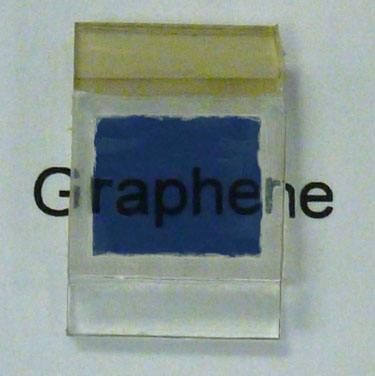As-made graphene naturally contains a variety of defects, particularly line defects and imperfections – like grain boundaries, wrinkles, ripples and folds – that can scatter charge carriers and adversely affect the conductivity of the material. Now, researchers in the US have found that metal nanowires incorporated into graphene appear to "electrically bridge" these defects, so dramatically decreasing the electrical resistance of the carbon material and increasing the flow of current through it. The hybrid structure might be the ideal replacement for indium tin oxide in transparent optoelectronics applications such as touchscreens, image displays and organic photovoltaics, says the team.

In the lab
"As far as we are aware, the composite graphene/nanowire films we made have better electrical conductivity than any single-layer graphene reported to date," team member Iskandar Kholmanov of the University of Texas at Austin told nanotechweb.org. "We have also shown in experiments that the films act as a transparent conductive electrode and could compete with the commonly used, and increasingly expensive, indium tin oxide as transparent conductive films."
The metal nanowires appear literally to act as a bridging element to provide additional conductive pathways for the charge carriers in graphene so that the defects are "bypassed" to a significant extent, he says.

Kholmanov and colleagues obtained their result by transferring graphene grown by chemical vapour deposition (CVD) from its original metal foil onto nanowire films. The transfer method employed allows the graphene to be placed onto very rough surfaces, like nanowires. The researchers then assembled the graphene/nanowire films with electrochromic oxide layers so that the optical transmittance and conductivity of the hybrid material could be tested (and compared with ITO) when it was used as a transparent electrode.
"In the many applications calling for transparent conductive films, our graphene/nanowire structure looks like a promising alternative to ITO," he added. "Indeed, we believe that the hybrid material might even be good enough to replace ITO in touchscreens, image displays and organic photovoltaics."
Other conductive 1D components
The team, led by Rodney Ruoff, says that it would now like to see what happens when the nanowires are replaced with other conductive 1D components, such as thin-walled carbon nanotubes.
"One distinctive feature of graphene/CNT films compared with the graphene/nanowire ones would be their very low surface roughness thanks to the smaller diameters of CNTs (1–2 nm) compared with those of the metal nanowires (60–120 nm)," explained Kholmanov. "Another advantage could be that CNTs, being more flexible than nanowires, have superior mechanical properties and so might perform better in a finished device." Such all-carbon transparent conductive films might also be more stable at higher temperatures and thus find use in a wider range of applications.
The current work is described in Nano Letters.
About the author
Belle Dumé is contributing editor at nanotechweb.org.


